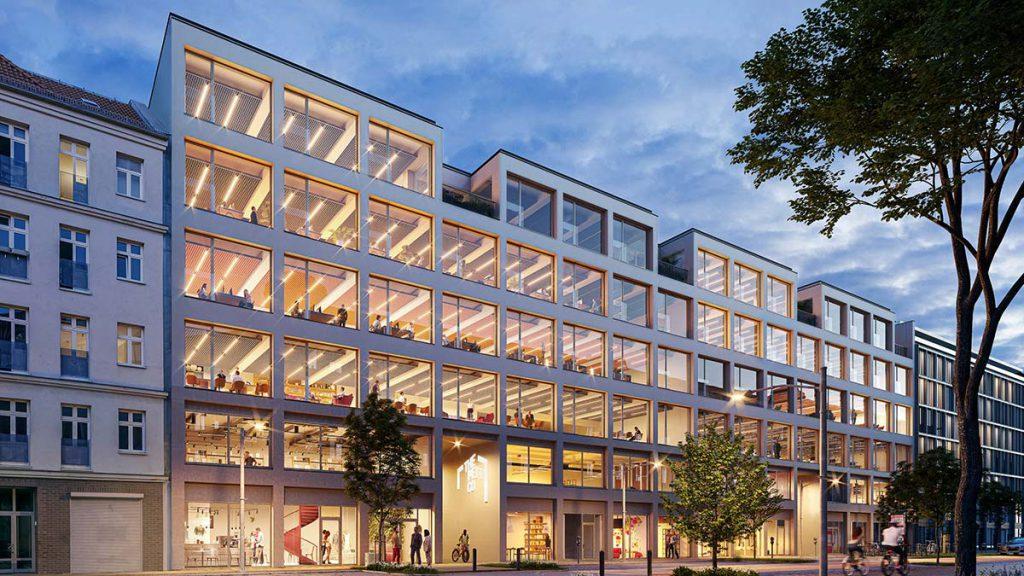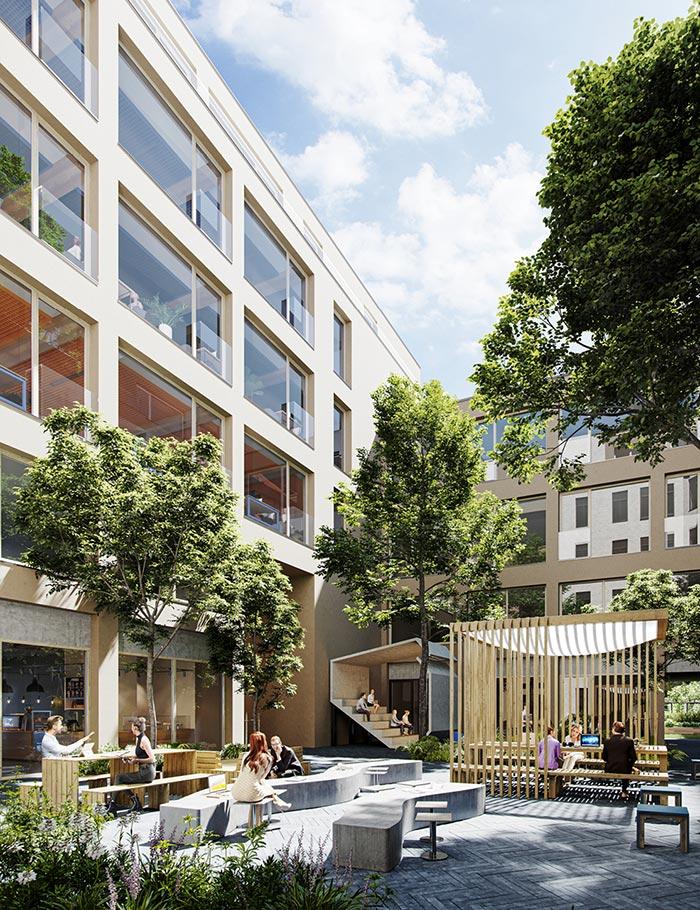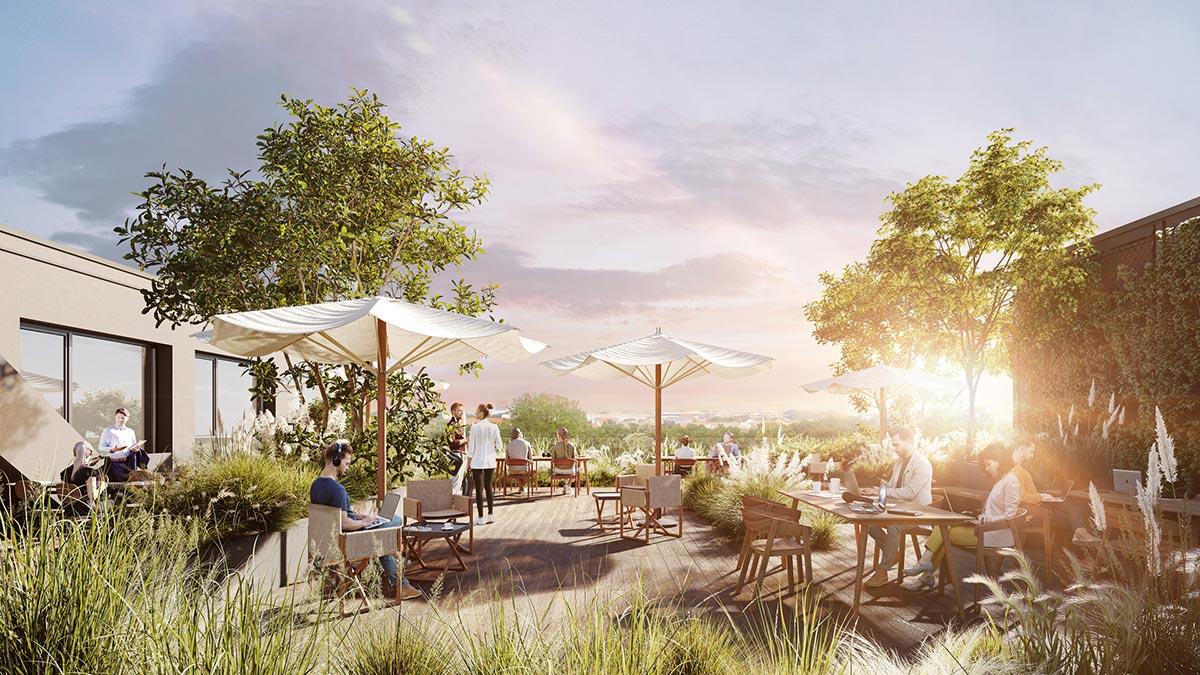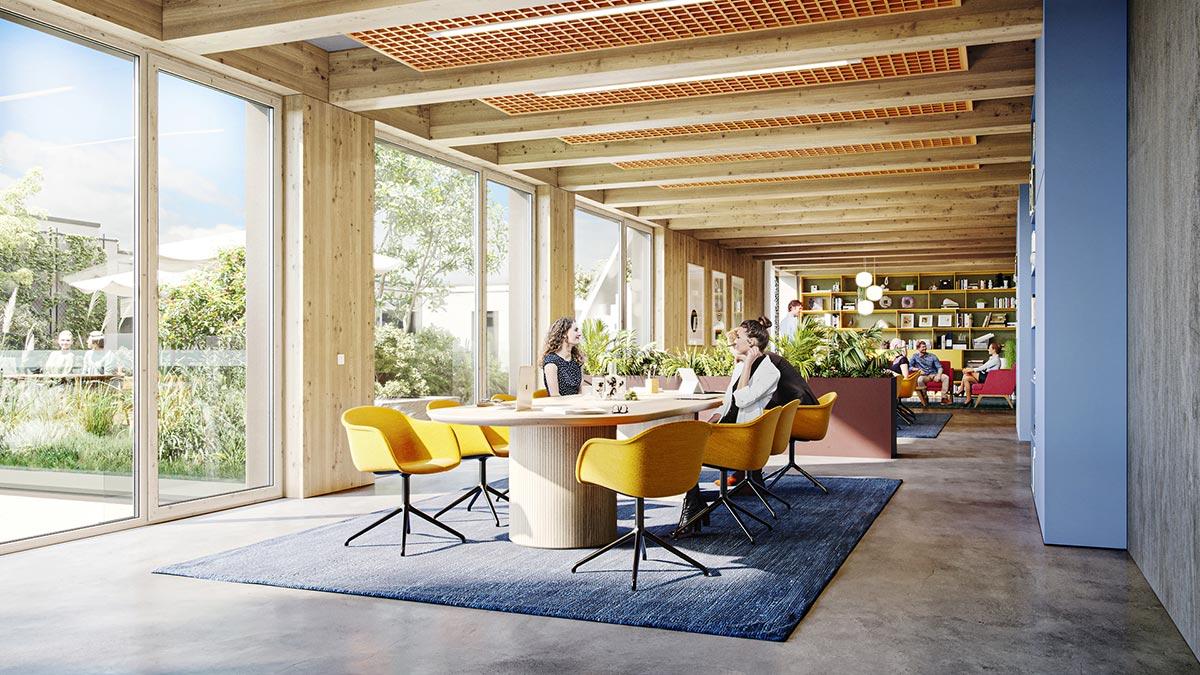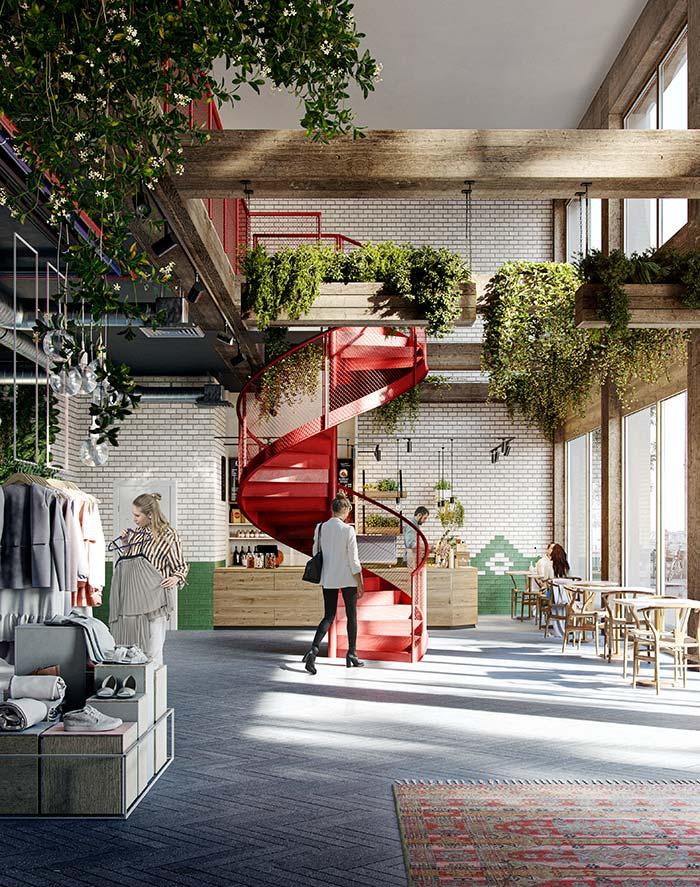Courtyards for all
The PettCo is the name of a new neighbourhood development in Friedrichshain, Berlin, where Wilhelminian-style buildings are being renovated and made climate-ready, together with a sustainable new building. Six inner courtyards will provide new public space, urban farming included.
Berlin’s courtyards are often better known than its building frontages, above all the Hackesche Höfe and the Kunsthof Berlin. They were created in the 1870s, when Berlin was growing into a city of over a million inhabitants. The huge influx of people in the course of industrialization and high population growth led to an increasing housing shortage. New building regulations made it possible for blocks of flats to be built in the gardens of the grand bourgeois homes. These buildings, in which workers and their families lived in very confined spaces, were often connected by several inner courtyards.
Today, these courtyards not only bear witness to the history of Berlin but are also the setting for a vibrant neighbourhood culture. In addition to individual shops and cafés, some courtyards are home to small craft workshops, galleries and theatres. The PettCo on Pettenkoferstraße in Berlin’s Samariterkiez district is looking to continue this tradition. The new urban quarter is located in Friedrichshain, a neighbourhood where residents are particularly dissatisfied with the urban planning of recent decades and the resulting gentrification.
Architectural opening to the neighbourhood
The PettCo is looking to do things better. This project cannot stop social and economic structural change, but it can help the city to be climate-ready and empower the local community. Its building contractor is opting for climate-neutral, timber hybrid construction, the renovation of historic buildings and the creation of new public spaces.
A vibrant courtyard structure in which the various uses and interests of the residents and the Samariterkiez neighbourhood create a diverse community.
Trockland, real estate developer
“Courtyards for all,” proclaims Berlin developer Trockland on its project website. One of its goals is “a vibrant courtyard structure in which the various uses and interests of the residents and the Samariterkiez neighbourhood create a diverse community”.
These open spaces are essential for an urban planning project, architect Thomas Hillig is convinced: “At this location, the architectural opening to the neighbourhood and the integration of various needs are important for the development of a vibrant urban quarter.” The plans for the sustainable site were drawn up by Hilligarchitekten in collaboration with Realace.
Six new courtyards for the neighbourhood
Six new courtyards in total are being created in this development, divided into different design themes and offering future users and residents a space for “nature, community, creativity and relaxation”. There will be commercial space available for retail, food & drink, workshops and fitness or yoga studios.
The new courtyards are framed by the new building, which will provide approx. 13,000 square metres of dedicated office space. Besides a variety of workspaces on offer over the five office floors, the green rooftop terrace and courtyard will also feature open-air workstations.
Wilhelminian-style houses getting climate-ready
In addition to the new building, office space suitable for the new work culture will be created in a historic factory building and the side wing. “The two buildings will be carefully renovated and equipped with a modern technical infrastructure, while bringing out their original charm,” according to the project description.
In this neighbourhood development, it is important to us that we show how re-densification, in the specific combination of renovation and new construction, can be eco-friendly while creating new living spaces and quality of life.
Lara Schlesinger, Trockland project manager
As building materials are a valuable commodity, care was taken when demolishing old parts of the buildings to return the materials to the circular economy, the developer says. Resource-conserving, timber hybrid construction is being used for both the new build and the addition of storeys to the historic buildings.
Once it has been renovated, the neighbouring Bürgerhaus will feature rental flats on five floors, delivering further preserved Wilhelminian charm. “The historic house will be restored to its former splendour and renovated with great attention to detail. Walls will be plastered, and windows restored. New, additional living space is being created thanks to a loft conversion,” says the developer. This will provide ten apartments with a total area of around 1,600 square metres.
A climate-neutral urban quarter
Its timber hybrid design, a photovoltaic system to generate green electricity, rainwater management and e-mobility infrastructure are combined to create a climate-neutral urban quarter.
“In this neighbourhood development, it is important to us that we show how re-densification, specifically in the combination of renovation and new construction, can be eco-friendly while creating new living spaces and quality of life for tenants and neighbours,” emphasizes Lara Schlesinger, project manager at Trockland responsible for The PettCo.
As green oases, the inner courtyards act to support biodiversity and the microclimate in the city. The many urban gardening projects in the neighbourhood will also get a boost. One of the six new courtyards will be available for members of the community to try out their green fingers in the communal flower beds.
Strict regulations are already in place to make new builds as carbon neutral as possible once they are in operation. But experts warn that the biggest obstacle on the path to climate reversal is existing buildings, whose energy footprints must be significantly improved. The PettCo could act as a role model for how a combination of new building and renovation can get cities climate-ready in the future.
Text: Gertraud Gerst
Visualizations: Trockland
